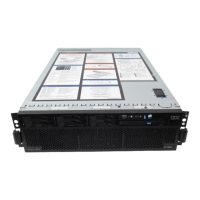262 IBM eX5 Implementation Guide
Pooled
This option presents the additional memory in the MAX5 as a pool of memory without
being assigned to any particular processor. Use this setting with Linux OSs.
6.9.2 UEFI performance tuning
Tuning the x3850 X5 for performance is a complicated topic, because it depends on which
application you have installed or which workload this application generates. For example, a
database server will generate a separate load on the hardware than a file and print server.
In this section, we provide general settings for the x3850 X5 that can be a good starting point
for performance tuning. For more detailed information about the best settings for your specific
environment and application needs, contact your IBM Business Partner or IBM
representative.
Table 6-9 gives general recommendations for the most common UEFI settings.
Table 6-9 Overview of UEFI settings
Setting MaxImum
performance
Virtualization
b
Low latency Performance
per watt
HPC
TurboMode
a
Enabled Enabled Disabled Disable Disabled
TurboBoost Traditional Power Optimized Automatically
disabled
Automatically
disabled
Automatically
disabled
Processor
Performance
states
Enabled Enabled Disabled Enabled Disabled
C states Disabled
Enabled Disabled Enabled Enabled
C1E state Disabled
Enabled Disabled Enabled Enabled
Prefetcher
Enabled Enabled Enabled Enabled Enabled
Hyper-
Threading
Enabled Enabled Disabled Enabled Enabled
Execute
Disable
Disabled
Enabled Disabled Enabled Disabled
Virtualization
Extensions
Disabled
Enabled Disabled Enabled Disabled
QPI Link Speed Max Performance Max Performance Max Performance Power Efficiency Max
Performance
IMM Thermal
Mode
Performance Performance Performance Normal Performance
CKE Policy Disabled Disabled Disabled Disabled Disabled
DDR Speed Max Performance Max Performance Max Performance Max Performance Max
Performance
Page Policy Closed Closed Closed Closed Closed
Mapper Policy Closed Closed Closed Closed Closed
Patrol Scrub Disabled Disabled Disabled Disabled Disabled
